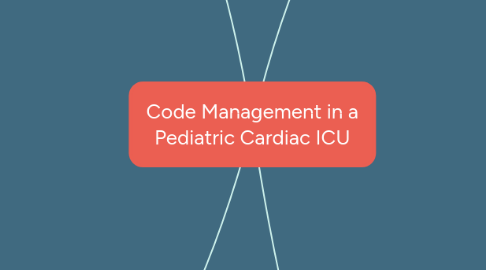
1. Behaviorism
1.1. Theorist
1.1.1. Ian Pavlov
1.1.1.1. Classical Conditioning
1.1.2. B.F. Skinner
1.1.2.1. Operant Conditioning
1.1.3. Robert Mager
1.1.3.1. Criterion-Referenced Instruction
1.2. View of Knowledge
1.2.1. A behavior can be caused by consequences, either positive or negative.
1.2.2. Reinforcers are positive consequences which strengthen the behavior.
1.2.3. All behavior is learned, rewarding behavior can shape it to achieve the goal.
1.3. View of Learning
1.3.1. Teaching is determined by the desired outcome or objective.
1.3.2. Educator should focus on what student is doing correctly, then uses constructive criticism.
1.3.3. Best used in situations where objectives can be clearly stated and behaviors observed.
1.3.3.1. Simulations
1.3.3.2. Skills demonstrations
1.4. Role of Educator
1.4.1. Clearly define objectives.
1.4.2. Create a controlled learning enviroment.
1.5. Role of Student
1.5.1. To actively demonstrate skills in the presence of the instructor.
1.5.2. To use objectives as goals for learning.
1.6. How the Theory Informs Education on Code Management.
1.6.1. Controlled learning environment skills lab or simulation.
1.6.2. Skills must be demonstrated in front of the educator.
1.6.3. Educator needs to observe skills ( i.e. CPR) and give feedback, starting with positive feedback then areas to work on ( i.e. the depth of compressions were great, next time just try to do them at a faster rate).
2. Cognitive Development Theories
2.1. Theorist
2.1.1. Malcom Knowles
2.1.1.1. Adult Learning Theory
2.1.2. W.G. Perry
2.1.2.1. Intellectual, Moral, and Ethical Development Theory
2.1.3. P. Benner
2.1.3.1. Novice to Expert Theory
2.2. View of Knowledge
2.2.1. Knowledge is sequentially developed over time.
2.2.2. Must bring order to a situation when learning.
2.2.3. Adult students are not just gaining knowledge, but gaining insight and perception.
2.3. View of Learning
2.3.1. Depends on students experience in the real world, maturity, and time.
2.3.2. Learners pass through stages of learning.
2.3.3. Lessons and materials should be based on the readiness of the learner.
2.4. Role of Educator
2.4.1. To teach students how to think, instead of memorization.
2.5. Role of Student
2.5.1. To take on an active role in their educaiton
2.5.2. To try to discover meaning in the information being delivered.
2.6. How the Theory Informs Education on Code Management.
2.6.1. Independant activities learners can move through at their own pace (i.e. online modules).
2.6.2. Split the code into individual skills, so learners can practice each part before moving onto the next.
2.6.3. Get to know about the students experience to individualize teaching to the students level.
3. Interpretive Pedagogies
3.1. Theorists
3.1.1. Heidegger, Benner, and Tanner
3.1.1.1. Phenomenology
3.1.2. Dieklemann and Ironside
3.1.2.1. Narrative Pedagogy
3.1.2.1.1. Knowledge is gained from the experience of teachers and students.
3.2. View of Knowledge
3.2.1. Knowledge is gained from the experience of teachers and students.
3.2.2. Students gain knowledge from the unfolding stories of other clinicians, patients, and students.
3.3. View of Learning
3.3.1. Learning occurs through dialogue of knowledge and experiences.
3.3.2. Make meaning out of information through dialogue.
3.3.3. Students must be self directive.
3.4. Role of Educator
3.4.1. To remove the educator as the center or authority.
3.4.2. To empower the student.
3.5. Role of Student
3.5.1. To actively be involved in open dialogue.
3.5.2. To make meaning out of information.
3.5.3. Must be self-directive in asking asking questions.
3.6. How the Theory Informs Education on Code Management.
3.6.1. Viewing a video of a code and discussing what was done well and what could be done better.
3.6.2. Students can tell their stories of previous codes they have been involved in, what they learned, questions they may have, and areas of improvement.
4. Neuroscience, Brain-based learning, Deep Learning, Multiple Intelligences Theory.
4.1. Theorists
4.1.1. Smith and Colby
4.1.1.1. Deep Learning Theory
4.1.2. Connell, Caine, & Caine
4.1.2.1. Brain-Based Learning
4.1.3. Gardner
4.1.3.1. Multiple Intelligences Theory
4.2. View of Knowledge
4.2.1. One's brain does not just develop in childhood, but through adulthood as well.
4.2.2. There is a direct connection between learning and brain development.
4.3. View of Learning
4.3.1. Learning occurs through abstract though, experimenting, and comprehension.
4.3.2. Repetition can make one's brain process things faster.
4.3.3. The rapid increase in the use of technology is changing how people learn.
4.4. Role of Educator
4.4.1. To ensure active engagement with students.
4.4.2. To promote critical thinking and communication skills.
4.4.3. Create a relaxed learning environment.
4.5. Role of Student
4.5.1. Have a good attitude toward learning.
4.5.2. To be motivated.
4.6. How the Theory Informs Education on Code Management.
4.6.1. Learners enjoy working with others, try small group activities.
4.6.2. Use technology in training, such as high tech manikins to give students immediate results.
4.6.3. Use of videos is helpful.

